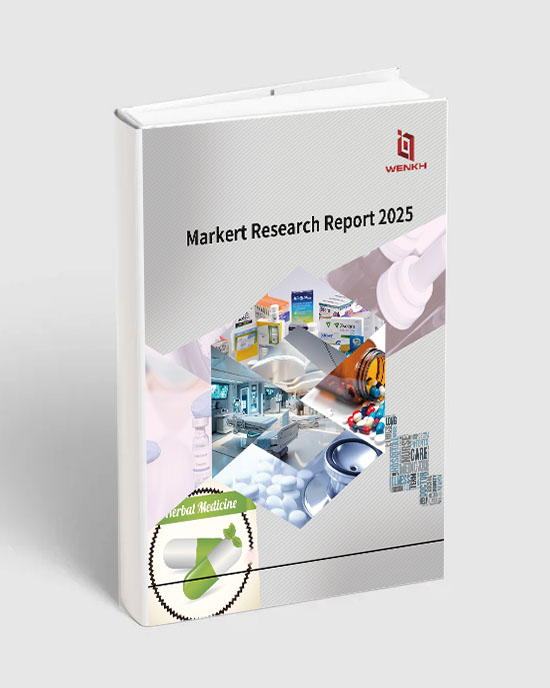
Global Intravenous (IV) Fluid Bags Market Size, Competition Landscape and Supply Chain Research Report 2025



Research Summary
Intravenous (IV) fluid bags are sterile, flexible containers designed for the intravenous administration of fluids, medications, or nutrients directly into a patient's bloodstream. These bags are typically made of plastic and come in various sizes, containing a solution that may include saline, glucose, or a combination of electrolytes and other substances. IV fluid bags play a crucial role in medical settings for hydration, drug delivery, and nutritional support. Healthcare professionals use them to administer medications, replace lost fluids, and provide essential nutrients to patients who may be unable to take fluids orally. The bags are connected to an IV line, allowing for controlled and regulated infusion, and are an integral component of intravenous therapy in hospitals, clinics, and other healthcare facilities.
According to WENKH research statistics, the global Intravenous (IV) Fluid Bags market size will reach Million USD in 2025 and is projected to reach Million USD by 2032, with a CAGR of % (2025-2032). Among them, the Asia-Pacific Intravenous (IV) Fluid Bags market is undergoing rapid changes, reaching Million USD in 2025, accounting for approximately % of the global market share. It is projected to reach Million USD by 2032.
The global Intravenous (IV) Fluid Bags market is highly competitive, with key market players including Baxter, SSY Group, Fresenius Kabi, B.Braun, CR Double-Crane, ICU Medical, Otsuka, Renolit, Technoflex, Huaren Pharmaceutical, Cisen Pharmaceutical, Vioser, Pharmaceutical Solutions Industry, Sippex, Well Pharma, etc. This report categorizes the competitive landscape of the global Intravenous (IV) Fluid Bags market into three tiers based on annual revenue, with the top three market players holding approximately % of the total market share.
This report provides an in-depth analysis of the global Intravenous (IV) Fluid Bags market, including market size, price trends, market status and future development prospects. It particularly focuses on the market share, product characteristics, pricing, revenue, sales volume and gross profit margin of major manufacturers in the global Intravenous (IV) Fluid Bags industry. Additionally, this report provides an in-depth analysis of the market status and future development trends of different segments of Intravenous (IV) Fluid Bags and their downstream application fields.
In terms of data coverage, this report includes extensive time-series data. Historical data spans from 2020 to 2024, providing a solid foundation for analyzing market development trends. The year 2025 is used as a base year to accurately assess the current market landscape, while forecast data extends from 2026 to 2032, using scientific analysis methods and models to offer forward-looking projections and insights into the market's future trajectory. This provides valuable reference information for industry participants and stakeholders.
The report covers regions and countries including North America, Europe, China, Asia Pacific (excluding China), Latin America, the Middle East, and Africa. It particularly focuses on the revenue and sales volume of Intravenous (IV) Fluid Bags in these regions and countries, as well as the market share of key market players in each region. The report provides an in-depth analysis of the regional distribution and future development trends of the Intravenous (IV) Fluid Bags market. By considering local policies, this report evaluates the market prospects of Intravenous (IV) Fluid Bags in each region and country, aiming to help companies gain a comprehensive understanding of the industry characteristics and development potential in different regions, optimize regional business layout, and develop precise market strategies to achieve global development goals.
This report places significant emphasis on data quality and reliability, leveraging a wide range of data sources to ensure accuracy and validity. Primary data collection is conducted through multiple channels, including in-depth interviews with senior corporate executives, industry experts, supply chain participants, and end consumers. This helps to gain insights into corporate strategic planning, industry policies, supply chain dynamics, and user experiences. Secondary data sources cover an extensive range, including authoritative government statistics, customs databases, industry related reports, third-party paid databases, investment research reports, academic studies, corporate financial statements, real-time media updates, and information from international organizations, all of which serve as a solid foundation for data verification and analysis.
Companies Covered
Baxter
SSY Group
Fresenius Kabi
B.Braun
CR Double-Crane
ICU Medical
Otsuka
Renolit
Technoflex
Huaren Pharmaceutical
Cisen Pharmaceutical
Vioser
Pharmaceutical Solutions Industry
Sippex
Well Pharma
Product Segment
Flex Plastic IV Fluid Bags
Semi-rigid IV Fluid Bags
Product Application
Hospital
Clinic
Others
Chapter Scope
Chapter 1: Product Statistical Scope, Product Segmentation Types and Downstream Applications, Overall Market Size, Current Status and Development Prospects
Chapter 2: Global Intravenous (IV) Fluid Bags Industry Chain Analysis
Chapter 3: Global Intravenous (IV) Fluid Bags Industry Environment Analysis and Porter's Five Forces Analysis
Chapter 4: Analysis of the Competitive Landscape of Major Companies in the Global Intravenous (IV) Fluid Bags Market (Market Share, Product Revenue and Sales Volume Comparison, Tier Division, Corporate Expansion and M&A Trends)
Chapter 5: Analysis of Global Major Companies (Company Profiles, Product Features and Product Segment, Product Revenue, Product Sales Volume, Product Average Price, Product Gross Profit Margin and Geographical Sales Share)
Chapter 6: Global Intravenous (IV) Fluid Bags Product Segment, Downstream Application and Major Regional Market Size Analysis (Sales Volume, Revenue and Average Price)
Chapter 7: North America Intravenous (IV) Fluid Bags Product Segment, Downstream Application, and Major Countries Market Size Analysis (Sales Volume, Revenue and Average Price)
Chapter 8: Europe Intravenous (IV) Fluid Bags Product Segment, Downstream Application, and Major Countries Market Size Analysis (Sales Volume, Revenue and Average Price)
Chapter 9: China Intravenous (IV) Fluid Bags Product Segment, Downstream Application, and Major Countries Market Size Analysis (Sales Volume, Revenue and Average Price)
Chapter 10: Asia Pacific (excluding China) Intravenous (IV) Fluid Bags Product Segment, Downstream Application, and Major Countries Market Size Analysis (Sales Volume, Revenue and Average Price)
Chapter 11: Latin America Intravenous (IV) Fluid Bags Product Segment, Downstream Application, and Major Countries Market Size Analysis (Sales Volume, Revenue and Average Price)
Chapter 12: Middle East and Africa Intravenous (IV) Fluid Bags Product Segment, Downstream Application, and Major Countries Market Size Analysis (Sales Volume, Revenue and Average Price)
Chapter 13: Research Conclusion
Chapter 14: Methodology and Data Source
Purpose and Value of the Report
Market Trend Insights: Analyze industry trends, market dynamics, and future growth potential to help companies forecast changes and develop strategic plans.
Competitive Landscape Analysis: Understand key players' revenue segmentation, strategies, market share, and business models to guide competitive decisions.
Investment Decision Support: Provide feasibility analysis through market size, growth rate, demand trends, and potential risks for informed investment decisions.
Target Customer and Demand Analysis: Examine consumer behavior, purchasing preferences, and pain points to optimize products and improve market penetration.
Policy and Regulatory Insights: Interpret relevant industry policies to ensure compliance and mitigate regulatory risks.
Business Model Optimization: Offer data-driven suggestions for enhancing business models and improving profitability.





